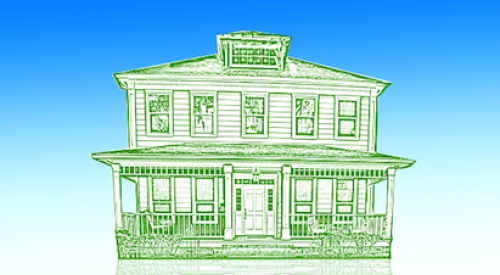|
Sooner or later, every business encounters customers that are dissatisfied, even when they've received the best service and products available. Sometimes their anger is justified; other times it stems from unrealistic expectations. Either way, these potentially hostile homebuyers can present serious problems for home builders.
We have found that, on average, 7.5 percent of a builder's customers had made a negative referral about their builder to others. Even the NRS award winners, which represent the industry's best in customer satisfaction, had an average of 0.8 percent of their customers making a negative referral about their builder. These customers — who have the capability to drive away business — represent the toughest clients we have to deal with in the home building industry.
Some would argue there is only so much we can do to appease customers and that there will always be some disgruntled homebuyers who will never be satisfied. Our team has found there is reason to hope with these customers, but it requires a sophisticated approach to customer service. This approach employs what we call a Builder SWAT Team, which is critical to protecting your organization from a public relations nightmare.
J.D. Power and Associates recommends builders focus on those customers who are easily satisfied and ignore those who are difficult to please. Our researchers have found this to be problematic and dangerous for builders. We agree that builders should focus their attention on the areas of greatest opportunity, but builders must also have a process for dealing with those moderately to severely dissatisfied customers who can create a public relations disaster in any given market. This is where a Builder SWAT Team is essential to maintaining good customer relations and a reputable public image.
Building Your SWAT TeamWe recommend every builder have a SWAT team — a crew ready to go into action when a potentially hostile customer emerges on the radar. What is SWAT? Special Weapons And Tactics. As most people know, SWAT is a division in many police departments assigned to handle difficult and dangerous situations. It is made up of regular police officers who go through rigorous training to learn special tactics for handling extreme situations. With that said, every builder should have in place a SWAT team to effectively deal with hostile customers.
Now, please leave the weapons at home; this is a non-violent approach. What I'm describing here is a specially trained group of employees that is called into action when a hostile customer is identified. The team works to resolve disputes through informal arbitration with the buyer.
There are four key components to a Builder SWAT Team:
- Identifying Potential Hostile Customers is best accomplished by having in place an active CRM (customer relationship management) and CSM (customer satisfaction measurement) programs. The CRM Program serves the purpose of managing work flow and documenting the history of the buyer in the process. It is during any of the CRM touchpoints that a buyer may be identified as being difficult and requiring intervention. Another way to identify customers is through your customer satisfaction survey program. As surveys come in, your team must be focused to flag low scores and read the comments of buyers to determine if there is a potentially hostile situation. Through examining your data and combining it with your knowledge of the customer's experience, a determination can be made as to the status of the customer.
- Composition of the Builder SWAT team members includes a project superintendent/builder, warranty representative and executive from the main office who are authorized to make warranty repair decisions. The key is to assemble a team that shows the homebuyer that you are taking that matter seriously. Also, by having top-level personnel involved, the SWAT team will be able to offer solutions and quickly resolve matters without the need to get approval from others in the company.
- Actions taken by the Builder SWAT team should be well documented. Ideally, the team should meet with the homebuyer at the house, which might require evening or weekend appointments. Start by going through each area of concern and determining if there is an appropriate fix. It often helps if SWAT team members can put themselves in the place of the homeowners and ask, "What would I expect the home builder to do if this were my house?"
- Resolution and follow up must be immediate. The SWAT team should track all issues and action plans to make sure they are completed in a timely fashion. Inoculate homebuyers against further dissatisfaction by alerting them to any delays they can expect with certain repairs or remedies. Finally, present the homebuyers with a service recovery gift that reminds them how much you appreciate their business and how important you view the homebuyer/builder relationship.
Once the SWAT team has done its job, the homebuyer can be placed back into the builder's regular CRM program. In an ideal world, you would never have to assemble your SWAT team. But knowing that the team is prepared to spring into action if needed is one of the most valuable insurance policies you can have.
| Author Information |
| Paul Cardis is CEO of NRS Corporation, a leading research and consulting firm specializing in customer satisfaction for the home building industry. He can be reached at pacardis@nrscorp.com. |
|












